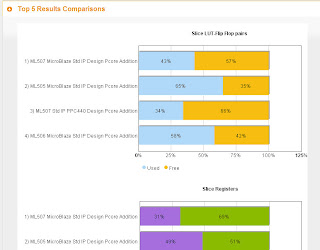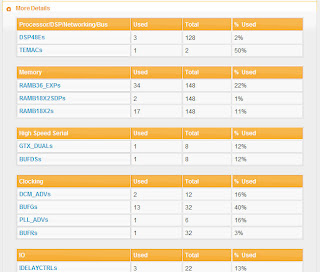Much of what we're occupied with recently can be summarized by a few 'F' words, although not the ones that one might imagine 😉 This phase of Plunify's progress might be termed the "sweat-and-blood" phase or simply, Product Development.
By the way, serendipitously, another 'F'--a Facebook widget was installed on our landing page www.plunify.com in a bid to engage users. Do check us out!
Features: Going through the list of things to do in order to start an FPGA/CPLD design, and coding them one by one into Plunify.
Feedback: Asking friends to try them out and then give us honest comments. Repeat.
FPGAs: Constantly thinking about Plunify's raison d'e^tre--making FPGAs/CPLDs/any type of PLD easier to use.
Funding: Cash flow and cash burn rate are always at the back of our minds, prompting the questions, "Can we get more funding?", "What milestone should we reach before applying for more?", "Who are the good incubators/investors out there?" etc.
First, the Feature we've been working on the past month is a reference design/board search function. It directly relates to one of the first steps taken when starting an FPGA project--look for an existing working example.
Targeted at both basic and experienced users, you can either type in keywords, for example "USB", into a typical search textbox or use an Advanced Search page to methodically check the board interfaces or reference design capabilities that you want.
Once you find what you want, intuitively one would wonder--how much of the FPGA's/CPLD's resources does this design consume?
Clicking on the search result, if we have data for it, you should see:
The yummy-looking cookies show a breakdown of the main resources consumed: logic elements, storage elements and IO. To the right, one can compare this design with others in the same set of search results.
Clicking on "Top 5 Results Comparisons" brings up:
And we're working on user-specified, targeted comparisons.
For the gory details, the Details tab also provides something like this:
Our data? Mainly reference designs and development kit information from Xilinx and Altera at the moment, but we aim to include as many reference designs as possible--from other FPGA vendors, distributors, design houses and individuals. For instance, a contributor on OpenCores.org can also list his/her design on Plunify. Contact us if you'd like to post your design.
A reference design will not fly with users if it is not verified in hardware/simulation, has little/no documentation. Support is also vital, especially for complicated designs or if documentation is not sufficient to reproduce the promised behavior. Therefore, for each design in Plunify, we inform you if the design has been verified or not, what you need to reproduce the results, and how much it is likely to cost you to obtain all the necessary pieces.
Gathering and entering the required data is an interesting and tedious task. Different vendors convey information in different formats/locations so sometimes it is difficult to sieve out the required bits. Oh, how I long for a "Reference design crawler"
(*scribbles on Todo list*) But when a user mentions that this feature is helpful, my my, the satisfaction is indescribable.
That brings us to Feedback.
After every alpha feature release, we have been asking friends from all over--the Valley, China, Japan to try it out and to critique. The Search feature is no exception. Since we also made changes to Plunify's website, Sean, Mary, Henry and 小澤さん were kind enough to comment on the entire site in general. I cannot tell you how helpful their feedback has been. Besides directly influencing what we do and
helping us improve, psychologically it motivates us to try harder to please. Simple as it sounds, user feedback are really the bee's knees.
The other two Fs: FPGAs and Funding
小澤さん and Henry raised some points about where Plunify is going, for example, how are users going to trust a company in its infancy like Plunify and will listing reference designs conflict with Plunify's goal of unbiased, transparent use of FPGA/CPLD/PLDs. Very good food for thought, and amidst much discussion, we realized that what we're doing is very much in line with the mission of Simplifying Programmable Logic Design. Again an obvious statement perhaps, but as long as we stay true to our mission and provide value, users will come to trust us. FPGAs can be sexy.
We got very curious about the Amazon AWS Startup Challenge and have been watching finalists' videos. Unfortunately the current round of applications requires Plunify to be registered in either the US, the UK, Germany or Israel. Being optimists, we'll try anyway 😉
Alright, back to work on the next feature...
Thanks for reading and have a good one!
Harnhua